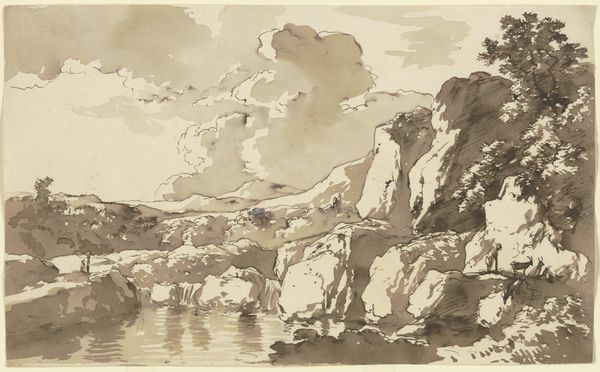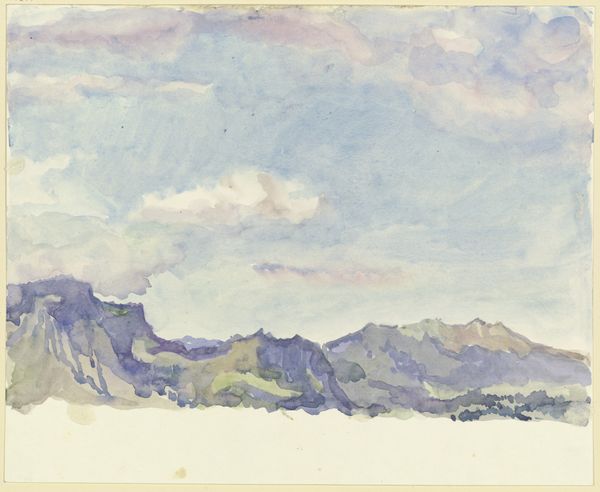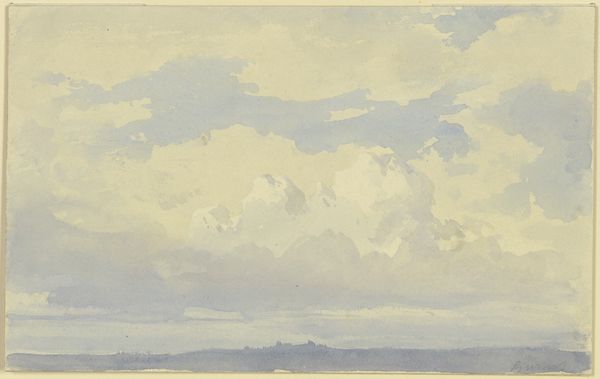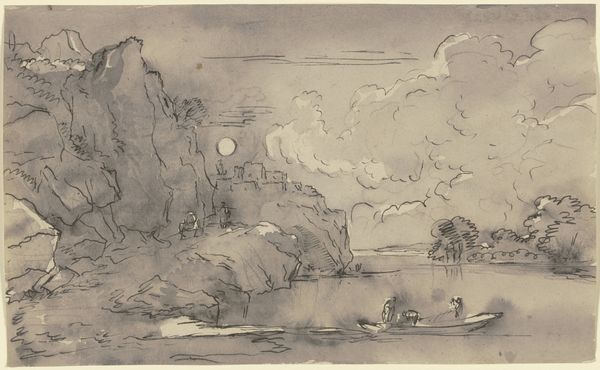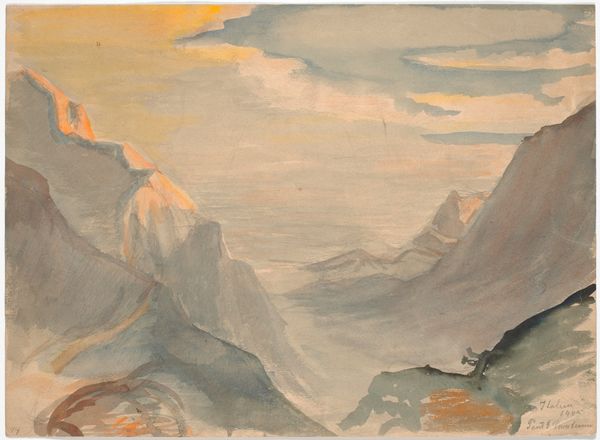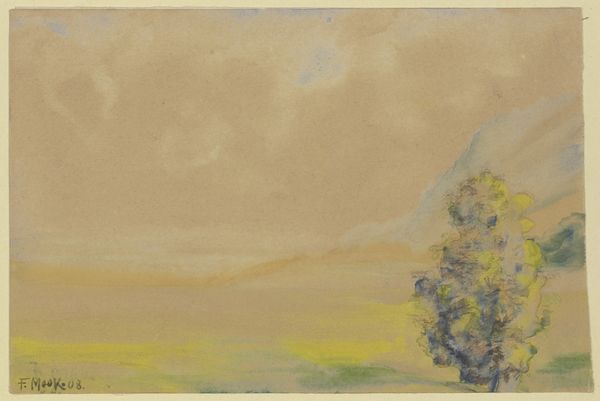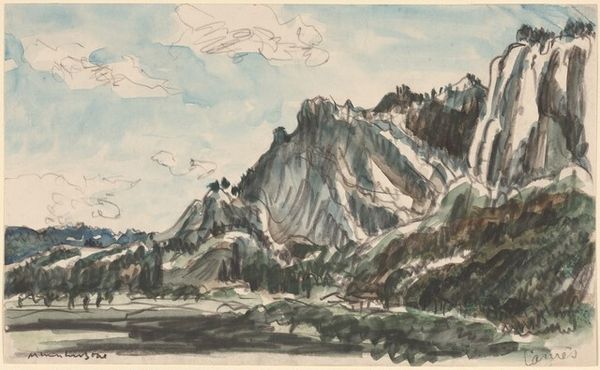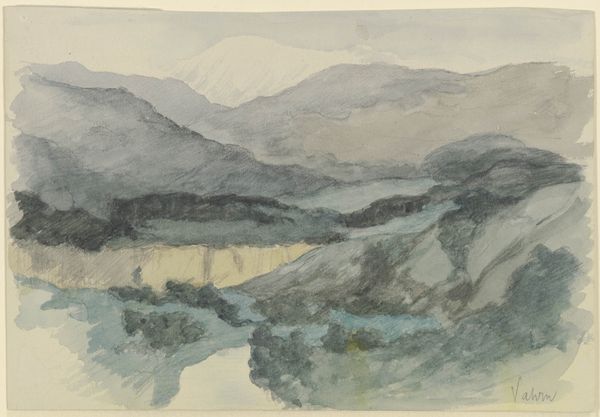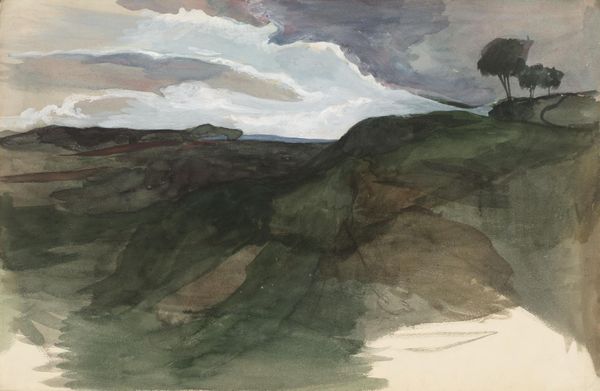
drawing, plein-air, watercolor, ink
#
drawing
#
plein-air
#
landscape
#
oil painting
#
watercolor
#
ink
#
romanticism
#
watercolor
Copyright: Public Domain
Editor: This is Carl Philipp Fohr’s *Wolkenstudie über Felskuppe im Gebirge*, a watercolor and ink drawing from around 1816-1817. It feels like such a fleeting moment captured. I'm really drawn to the contrast between the solidity of the rocks and the ethereal nature of the clouds. What stands out to you when you look at it? Curator: I notice first the clear articulation of form achieved through relatively simple means. Observe the artist's application of washes. He's established depth through strategic layering and varying the intensity of color. Notice how line dictates the structure of the clouds, moving your eye upward, contrasting the more stolid form of the cliffside, anchored to the bottom, moving the eyes to different places. Editor: So, it's the formal relationships that create that feeling of movement? Curator: Precisely. The structural interplay of horizontal cloud formations and the vertical thrust of the rock establishes a visual dynamism, does it not? Further, Fohr is meticulous in rendering textures – see the rough, uneven surfaces of the rocks against the softness of the clouds. Do you observe the delicate modulation of color across the sky? Editor: I do see how he varies the blues to create the illusion of depth. Is it all about those contrasts then? Curator: In a sense. The visual success lies in the sophisticated arrangement of basic compositional elements – line, color, and form, working in concert to create a balanced, if not peaceful, pictorial space. The limited palette focuses attention on form. Editor: So interesting. I came in seeing a pretty landscape, but now I see how the artist created the mood through structure and color, not just subject. Curator: Indeed. Close examination always reveals the power of artistic decisions within the seemingly simple.
Comments
No comments
Be the first to comment and join the conversation on the ultimate creative platform.
